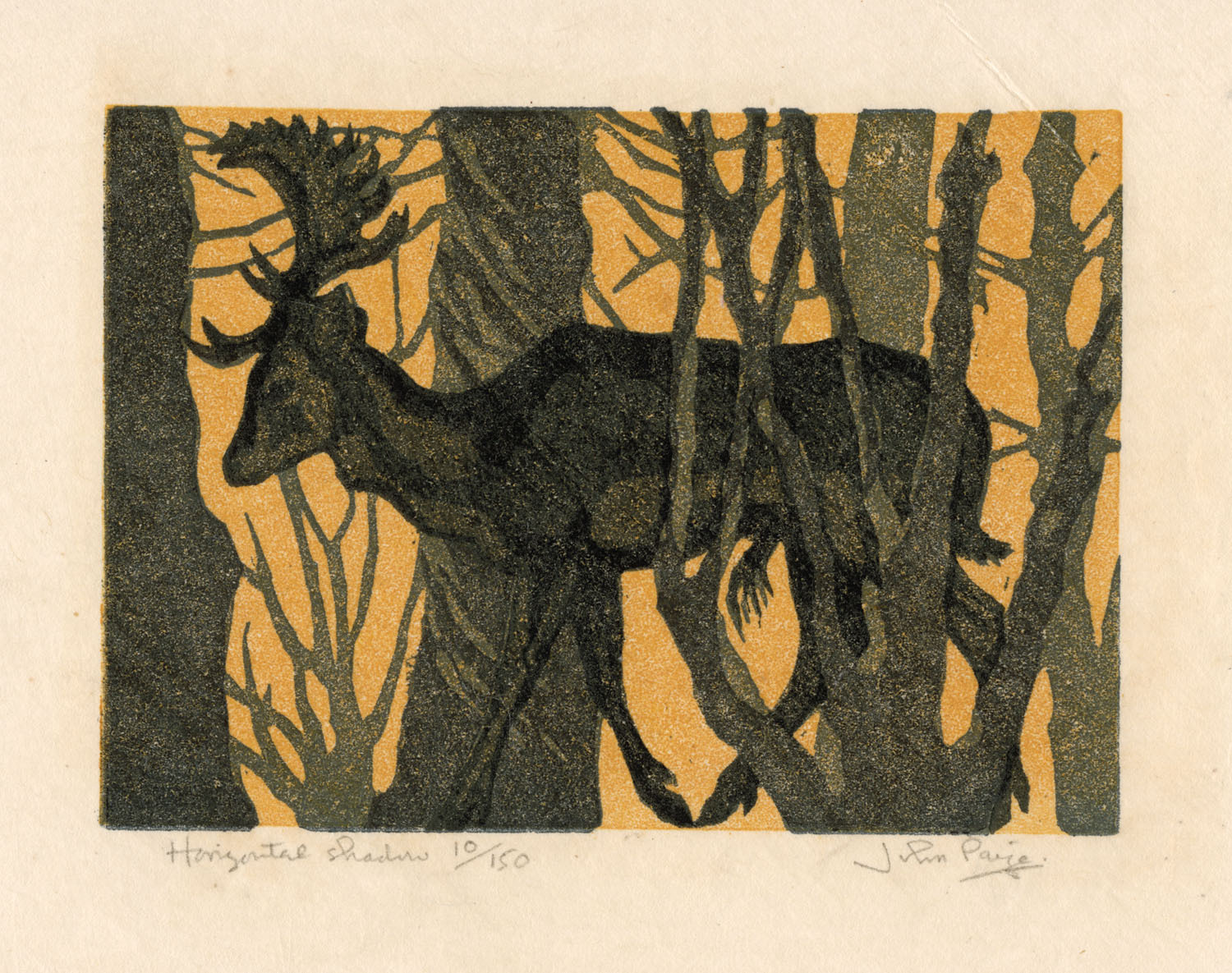
John Paige 1927–2021
John Paige was an artist with a passion for the natural world.
John was born in 1927 and attended Rugby School, where, from the age of 14 in 1941, he began keeping his wildlife sketch notebooks, – a discipline he continued until well into his nineties. He was encouraged by artist and naturalist Denys Watkins-Pitchford, (or ‘BB’), who, as his art master, taught him to paint in oils; but his true role model was Robert Talbot Kelly, who had also taught at Rugby. By the end of his time at school, John was birdwatching as an alternative to sport; and from this grew his deep and accurate knowledge of birds and the urge to express creatively the record of what he saw.
Called up for National Service on his eighteenth birthday, the army took John to Palestine, Germany, Aden and Malaya, giving him a wonderful experience of different habitats. While out on patrol, binoculars were also handy for bird-spotting! After completing his National Service, he spent two years at Cambridge University before rejoining the army as a regular officer. While at Cambridge he spent his vacations working at Slimbridge, where he got to know Peter Scott, and it was Peter who later put him forward for the post of warden at the Uganda National Parks.
After returning home from Uganda, John went to Birmingham College of Art to study for a Diploma in Art and Design. It was here he developed his printmaking skills which became a hall mark of his artistic career. John was also an all-rounder and could work with equal facility in many media: his graphic design skill came to the fore in his meticulously researched and minutely detailed train friezes; he was also a skilled portraitist. His paintings, usually made out in the field, are sometimes a mass of marks and colours that almost camouflage the subject; often appropriate when portraying a bird or animal suddenly realising it has been spotted by an artist and making a departure.
Birds endured as his favourite subject matter. Everything John did was based on observational drawing, and the sketchbooks provided the vital source material for his finished work and are a true legacy of his lifetime joy in being out in nature. Any studio drawings would have gone through some kind of process, perhaps being scratched into a scraperboard of his own invention, or redrawn as a monoprint employing a variety of marks made by pressure on the back of paper laid over thinly-rolled ink.
John worked with determination to master many new ways of creating. His preference was for a low-tech approach, and rather than using a printing press he would hand-burnish relief prints to keep complete control of the results. In screen-printing his use of cut and torn paper stencils meant that he never required all the photo-process paraphernalia. Within simple methods, the range of invention and variation was never-ending, and his aim to eliminate the unnecessary focused the clarity of his vision. His torn-paper printmaking technique allowed freedom and spontaneity. His prints look deceptively simple; after carefully devising a composition, he would then work out how to render it in layers of colour, letting subsequent transparent overlays evolve in the manner of a sculptor gradually shaping the subject.
In 1964 the newly formed Society of Wildlife Artists had its first show and John Paige very soon became a member and would continue to show work with them annually for the next 55 years. The RSPB’s ‘Birds’ magazine switched from conventional illustration work on the covers to using some of John’s lively collages; this had a liberating effect on some younger bird artists who were also eager to go in a new direction.
Through the Society, and the Artists for Nature Foundation, the circle of natural history artists grew to be international, and John worked on conservation projects in France, Alaska and India, as well as in various parts of the UK. John’s images are reproduced in many of their linked publications. He has work in the Leigh Yawkey Woodson Art Museum, Wisconsin, USA, and in Nature in Art, Gloucestershire, UK.
Whether far afield or at home, John’s attention to wildlife leapt easily from the domestic — a blue tit in his garden — to the wild elephants that he watched while in Uganda. He could capture a precious viewing of a tiger in northern India, or, infuriated in Scotland by biting insects, draw a sheet of angry mono-printed midges. He recorded crows mobbing a kite, but also the crow being mobbed by lapwings — aware of all the interactions in nature.
In 1984, John and his wife Jane set up The Old Brewery Studios in King’s Cliffe. Here they ran residential summer schools for adults and children, and term time courses. John was an inspirational teacher whose passion and critical observations of his own and other peoples’ work were always honest, accurate and welcome.
They extended this tutoring with Wildlife Travel, leading parties abroad and looking at both botany and wildlife. The sociability of these excursions, along with the various artists projects and the annual reunions in the Art Marquee at the British Birdwatching Fair in Rutland, meant John and Jane often welcomed a houseful of multinational guests. Both as an artist and a naturalist, John has left a lasting impression on his local community, his students, his fellow artists and a wider audience.
Carry Akroyd
